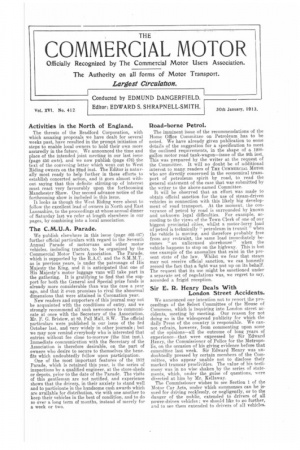Road-borne Petrol.
Page 1

If you've noticed an error in this article please click here to report it so we can fix it.
The. imminent issue of the recommendations of the Home Office Committee on Petroleum has to be noted. We have already given publication to some details of the suggestion for a specification to meet the outlined requirements, in the shape of a 1200gallon motor road tank-wagon—issue of the 9th inst. This was prepared by the writer at the request of the Committee. It will no doubt be of additional interest to many, readers of THE COMMERCIAL MOTOR who are directly concerned in the economical transport of petroleum spirit by road, to read the general statement of the case that was submitted by the writer to the above-named Committee.
It will be observed that an effort was made to obtain official sanction for the use of steam-driven vehicles in connection with this likely big development of road transport. At the moment, the conveyance of petrol by road is surrounded by known and unknown legal difficulties. For example, according to the views of the Town Clerk of one of our biggest provincial cities, whilst a motor-lorry load of petrol is technically " petroleum in transit " when the vehicle is moving, and therefore probably free from any restraint, the same load immediately becomes "an unlicensed storehouse" when the vehicle happens to stop on the highway. This is but one example of the anomalies that exist in the present state of the law. Whilst we fear that steam may not receive official sanction, we can honestly record the fact that a fight was put up on its behalf. The request that its use might be sanctioned under a separate set of regulations was, we regret to say, accorded a frigid reception.




























